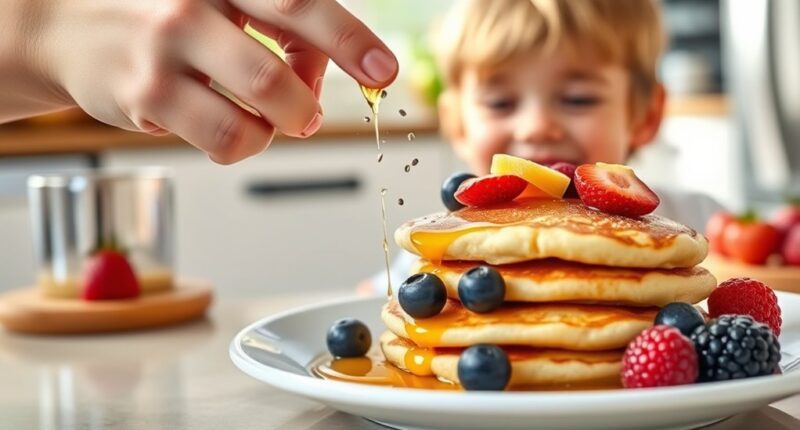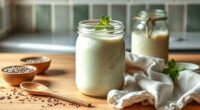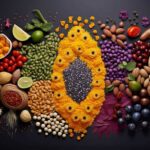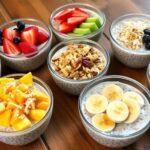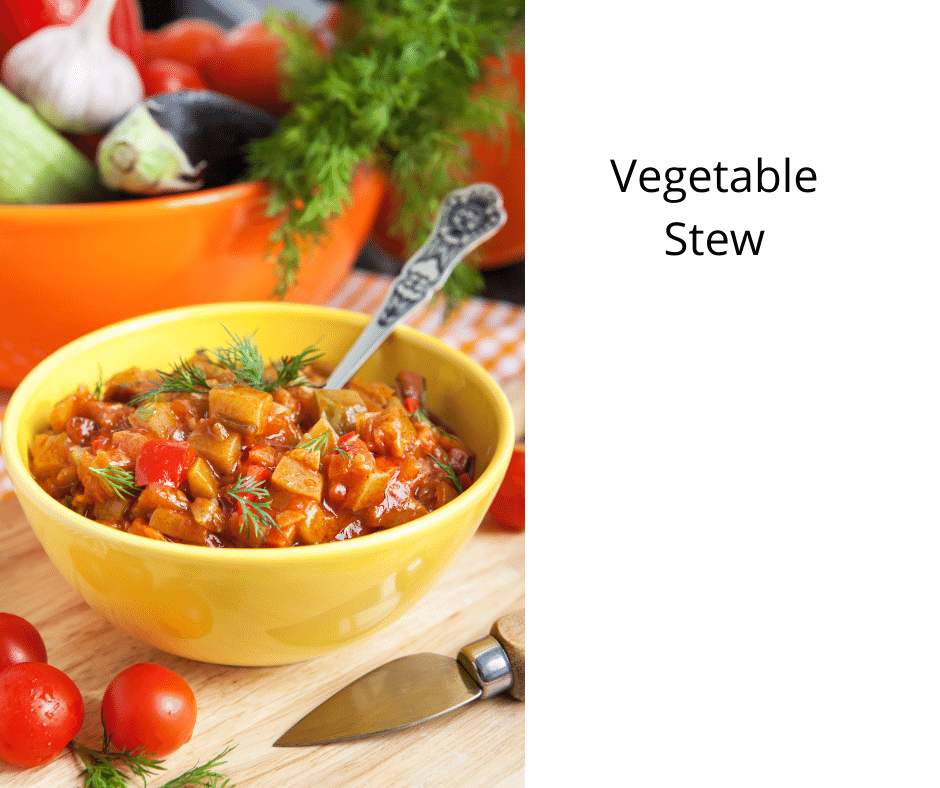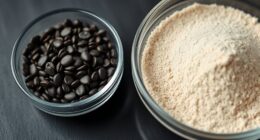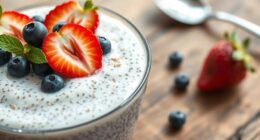To add chia seeds to kids’ meals in a fun and sneaky way, try mixing a spoonful into smoothies or yogurt for added crunch and nutrition. Make chia pudding the night before and let kids enjoy a creamy snack, or sprinkle seeds into baked goods like muffins and pancakes. Using familiar flavors and colorful toppings can make these additions more appealing. Keep experimenting with creative ideas—more tips await to help you make nutrition enjoyable!
Key Takeaways
- Incorporate chia seeds into smoothies with favorite fruits for added nutrition and appealing texture.
- Make chia pudding by soaking seeds overnight in milk, creating a tasty, kid-friendly snack.
- Sprinkle chia seeds on yogurt or oatmeal for crunch and subtle health benefits.
- Mix chia seeds into baked goods like muffins or pancakes to enhance nutrition without changing flavor.
- Use chia seeds as a topping or mix-in in energy bites or granola, making them fun and nutritious portable snacks.
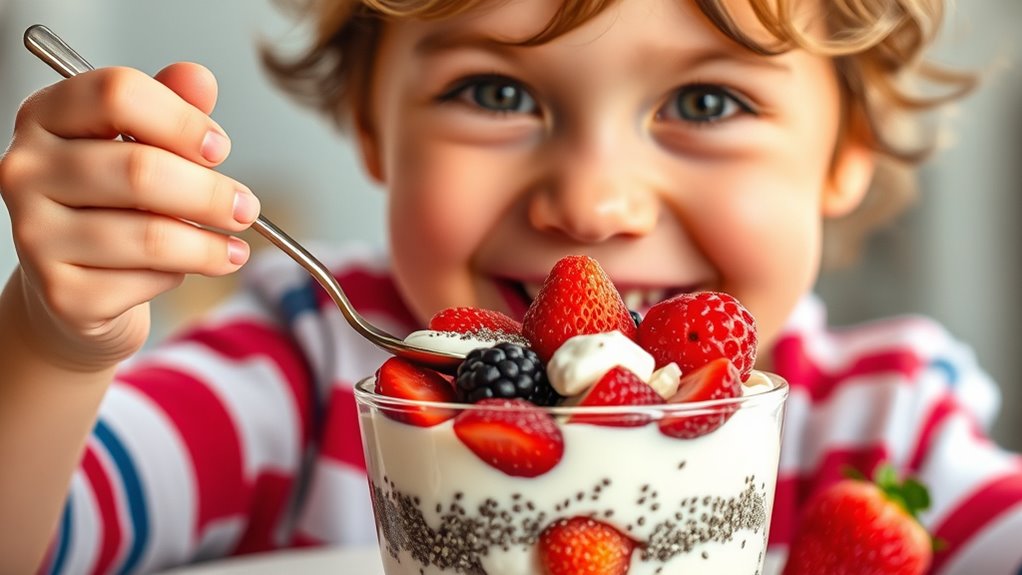
Incorporating chia seeds into kids’ meals is a simple way to boost their nutrition without sacrificing flavor. These tiny seeds pack a punch when it comes to nutritional benefits, making them a smart addition to your child’s diet. Chia seeds are rich in omega-3 fatty acids, fiber, protein, antioxidants, and essential minerals like calcium and magnesium. This combination supports healthy growth, boosts energy, and helps keep kids full longer. The best part is that chia seeds have a mild, nutty flavor that blends well with many foods, making them easy to sneak into everyday meals.
When thinking about recipe ideas, the possibilities are endless. You can add chia seeds to smoothies for an instant health boost without changing the flavor much. Simply stir a tablespoon into the blender with your child’s favorite fruits and liquids, and the seeds will thicken the drink, giving it a satisfying texture that kids often enjoy. Another popular way to incorporate chia seeds is by making chia pudding. Mix a few tablespoons of seeds with milk or plant-based alternatives, add a touch of honey or vanilla, and let it sit in the fridge for a few hours or overnight. The result is a creamy, nutritious dessert or snack that feels indulgent but is loaded with benefits.
You can also incorporate chia seeds into baked goods like muffins, pancakes, or bread. Just add a spoonful or two into the batter and bake as usual. The seeds add a slight crunch and boost the fiber content, making these treats more filling and nutritious. For a fun twist, sprinkle chia seeds on top of yogurt or oatmeal. Kids love toppings, and the seeds add a crunchy texture that enhances the eating experience. You can even mix them into homemade granola or energy bites for a portable, nutrient-dense snack.
Sneaking chia seeds into kid-friendly meals is all about creativity. Start with small amounts and gradually increase as your child gets used to the texture. It’s a great way to improve their overall nutrition without them even noticing. Additionally, using meal planning techniques can help ensure consistent inclusion of chia seeds in their diet. Remember, the key is to make it fun and flavorful, so they associate these healthy additions with positive eating experiences. With a little experimentation, you’ll find that adding chia seeds becomes a natural part of your meal prep routine, helping your kids develop healthy eating habits early on while enjoying their favorite foods.
Frequently Asked Questions
Are Chia Seeds Safe for All Children?
You’re wondering if chia seeds are safe for all children. While generally healthy, you should consider pediatric concerns and potential chia seed allergies. Always start with small amounts and watch for allergic reactions like rashes or swelling. Consult your child’s doctor before introducing chia seeds, especially if there’s a history of food allergies. Every child is different, so safety and moderation are key when adding new foods like chia seeds to their diet.
How Much Chia Seed Is Appropriate for Kids?
You might wonder about the appropriate portion of chia seed servings for kids. Generally, a small amount, like 1 teaspoon for younger children and up to 1 tablespoon for older kids, works well. These chia seed servings provide benefits without overdoing it. Always start with a modest portion, and gradually increase if your child tolerates it well. Remember, moderation is key to safely incorporating chia seeds into their diet.
Can Kids With Allergies Eat Chia Seeds?
Think of allergy testing as your first line of defense. If your child has food allergies, including to seeds, consult with a doctor before giving chia seeds. Kids with seed allergies should avoid chia to prevent reactions. If they’re allergic, consider seed alternatives like flax or hemp seeds. Always prioritize safety and obtain professional advice to ensure you’re making the best, healthiest choices for your child.
Do Chia Seeds Affect Kids’ Digestion?
Chia seeds can help kids’ digestion because they’re high in fiber benefits, which promote healthy bowel movements. However, you should consider taste considerations, as some kids might find the gel-like texture unfamiliar. Start with small amounts and mix them into familiar foods to ease their digestion and enjoyment. Just make certain they drink enough water, as chia seeds absorb liquid and can cause discomfort if not properly hydrated.
When Is the Best Time to Serve Chia Seeds to Children?
Think of meal timing as the key to opening your child’s energy vault. You should serve chia seeds during breakfast to fuel their day or as a healthy snack between meals. Incorporate them into smoothies, yogurt, or puddings for sneaky nutrition. These versatile seeds work well anytime, but serving them in the morning or as a mid-afternoon snack guarantees your kid gets maximum benefits without disrupting their digestion.
Conclusion
So, next time you sneak chia seeds into your kid’s favorite snack, remember: you’re actually turning their meals into tiny health bombs—who knew healthy could be so sneaky? Ironically, what seems like a simple trick might be the secret to their growing habits and endless energy. Looks like those little seeds are packing a punch, all while keeping you the clever parent. Truly, sometimes the smallest additions make the biggest difference.
